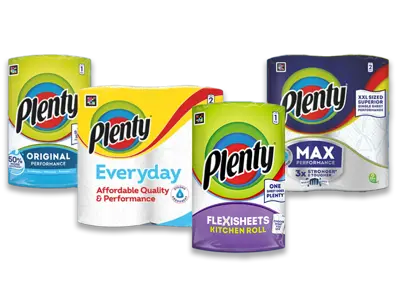
Your partner isn't the only one emitting silent but deadly gases on a Saturday morning after yesterday's date night curry... Let’s talk carbon emissions. We know they’re not good for the planet and we know that we should do our best to limit them. It’s likely you’ve heard of reducing carbon emissions, but what about carbon offsetting? What does “offsetting carbon emissions” mean?
What is carbon reduction? In this article we’ll run through exactly that, and answer the questions, "what is carbon offsetting and how does it work?" We’ll also compare emissions reductions versus carbon offsetting as means of reducing our greenhouse gases and our impact on the wider environment.
Reducing carbon emissions: what is carbon reduction?
So, we know that the increasing levels of greenhouse gases in our atmosphere are harmful to both the planet and its inhabitants.3 That’s why we need to work on reducing carbon emissions, as well as other harmful greenhouse emissions like methane and nitrous oxide.4 Carbon reduction is simply lowering our output of emissions like CO2 into the atmosphere.
Emissions reduction is the primary and most effective method for combatting climate change. By minimising the release of greenhouse gases such as carbon dioxide, methane, and nitrous oxide, we prevent them from accumulating in the atmosphere and exacerbating the greenhouse effect.
This approach involves practical, sustainable actions we can make ourselves, like saving energy at home, adopting eco-friendly transportation methods, and making responsible financial choices. It also involves larger entities like governments and corporations, which can reduce carbon emissions by changing manufacturing methods and implementing policy. By lowering our ongoing emissions, we can show care to those that inhabit it.
These are just some of the ways we can join the climate change fight ourselves. For a more detailed breakdown and more tips and tricks, check out our article all about how to reduce your carbon footprint.
Tip
At Plenty, we’re constantly looking for new ways to reduce our carbon footprint. In the transportation of our kitchen roll, Essity optimises routes and maximises load-fill, all while gradually switching to lower emission fuel.
Now we know what carbon emission reduction is, but what is offsetting carbon emissions, and how is it different to carbon emission reduction?
What does offsetting carbon emissions mean?
What is a carbon offset? Carbon offsetting is like hitting the eco-reset button. It's a practice where you balance out the carbon emissions from your actions by investing in other projects that either reduce or remove an equivalent amount of carbon dioxide and other greenhouse gases from the atmosphere. In a nutshell, it's a handy tool to help combat climate change by promoting greener, more responsible choices.
So, it's a way for individuals and businesses to live sustainably by supporting eco-friendly, carbon-positive projects like:
- Capturing methane from landfills.
- Planting trees.
- Other renewable energy initiatives like sucking carbon from the atmosphere.
Carbon offsetting, while valuable, is more of a last resort in the fight against climate change. It allows us to counteract emissions by investing in projects that remove or reduce an equivalent amount of greenhouse gases. This approach is essential for addressing emissions that are difficult to eliminate, like those from certain industrial processes or long-haul air travel.
But relying too heavily on carbon offsetting without prioritising emissions reduction is a bit like trying to fill a leaky bucket without fixing the leaks. It's a necessary tool to manage emissions, but it should not be the sole strategy.
Why are emission reduction and carbon offsetting important?
Reducing carbon emissions and carbon offsetting are important steps we can take in reducing the greenhouse effect. The greenhouse effect takes place when our carbon emissions – amongst other emissions – get trapped in our atmosphere. When this happens, the Sun’s heat, which has entered our atmosphere, cannot escape from our atmosphere, as these emissions are stopping it from doing so.1
Because this heat remains trapped, the Earth heats up. This is also known as climate change and it’s a threat to our planet.2 By reducing this threat, we’re showing not only the planet some care, but we’re showing care for all of those that live on it. From the furthest corners of the planet to the neighbours on your street, everyone wins when we work together to reduce greenhouse gas emissions.
Offsetting carbon: carbon credits explained
Emission reduction, carbon offsetting, and now... carbon credits!? Carbon credits are, in theory, a simple concept tied closely to carbon offsetting. Here are carbon credits, explained.
When an individual or business takes steps to reduce their carbon emissions through sustainable practices, they can earn carbon credits. These credits represent the amount of greenhouse gas emissions that have been reduced or removed from the atmosphere.
These credits can then be bought or sold on the carbon market, allowing others to offset their emissions by purchasing these credits. In this way, carbon credits enable a system of financial incentives for environmentally friendly activities and provide a way for businesses to practise carbon offsetting.5
Carbon offsetting vs. carbon emission reduction: what's the difference?
Carbon offsetting, then, is all about negating the carbon emissions we have already produced, whereas reducing carbon emissions is about lowering the level of emissions in the first place.
While both carbon offsetting and carbon emissions reduction play crucial roles in fighting climate change, it's important to recognise that they serve different purposes. Reducing carbon emissions focuses on tackling the root cause of climate change by directly reducing emissions, while carbon offsetting offers a way to compensate for emissions that have already occurred.
Emissions reduction takes priority
Carbon emissions reduction should be our primary focus in addressing climate change.6 This focus tackles the root cause by directly reducing emissions, helping to prevent the greenhouse effect from worsening. Carbon offsetting is a valuable tool for addressing emissions that are challenging to eliminate, but it should be viewed as a complementary approach, not a substitute for efforts to reduce emissions at their source.
How are we doing our bit?
At Plenty, our core values are centred around compassion – caring for both our consumers and the environment. That's why we craft our Flexisheet kitchen roll so you can use less and save more. With more perforations, you can choose the exact amount of kitchen roll you need, and with 250 Flexisheets per roll, you run out less often. More paper, less waste, so choose whether you need a small or a big sheet, depending on the cleaning job.
Voted your 2024 Product of the Year winner in the General Household category, Flexisheets work without a tube, so there's no cardboard to throw away, cutting down on waste. With 13 million less cores, that’s 235 fewer lorries on the road, a 6% carbon footprint reduction, as well as 12 thousand fewer pallets needed.* Flexisheets also has an increased post-consumer recycled plastic packaging content of 33% and comes with less plastic** in the packaging. It’s your environmentally friendly choice.
*Compared to Plenty Original 1R
** Data based estimated 1st year of launch, based on 2r equivalent paper. Carbon Footprint Essity LCA Analysis Nov 2021.
Sources:
1 British Geological Survey, The greenhouse effect
2 United Nations, Causes and Effects of Climate Change
3 World Health Organization, Climate Change
4 National Grid, What are greenhouse gases?
5 United Nations Development Programme, What are carbon markets and why are they important?
6 WWF, Understanding Carbon Offsetting
Related articles
2 easy ways to make homemade musical instruments for kids
Looking for easy ways to have fun with your kids while teaching them how to recycle? Learn how to make musical instruments from waste material.

Why is my cat being sick? Symptoms, causes, and solutions
“Why is my cat sick?” Learn about the signs of illness in cats, the reasons why your feline friend might be sick, and how to treat a sick cat at home.

How to save money at home: simple saving tips and budgeting tips
Looking for simple ways to save money at home? Follow our budgeting tips and saving ideas to help you save money and provide more for your loved ones!

How to speed up composting: 10 hacks to accelerate your compost
Are you looking for ways to speed up your compost? Discover how to accelerate compost with our 10 hacks. Accelerating your compost has never been easier!

What to do with leftover food: creative ways to use food leftovers
From leftover chicken ideas, to what to do with leftover rice, find out how to get the most from your food leftovers.

Shortage of water: what is water stress and what can we do about it?
What is water stress, and what can we do to reduce its impact? Learn about water stress, its definition, causes, effects, and how to help water scarcity.


